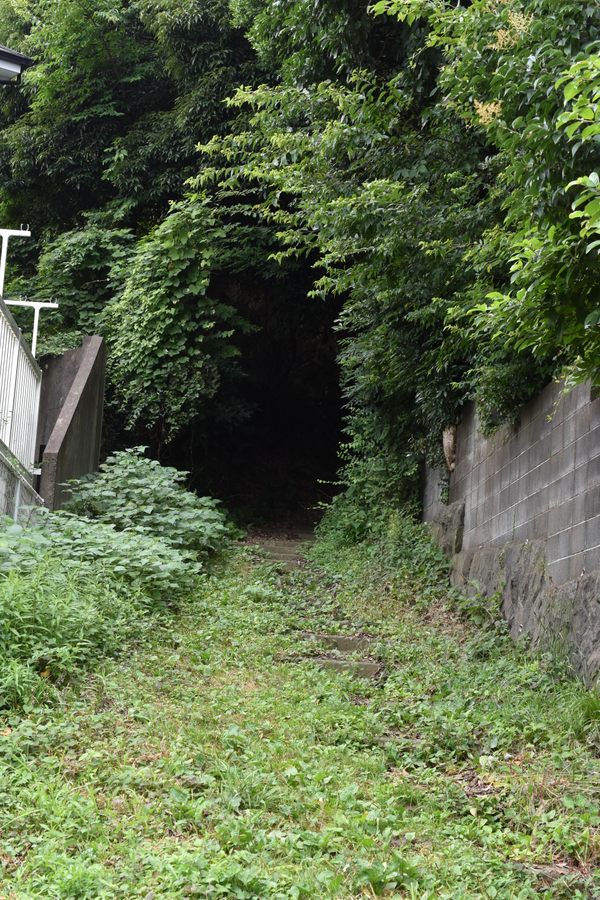Kamakura is a medieval city enclosed within mountains. Historically, before the advent of tunnels, people built kiridōshi for traffic; this was a narrow mountain pass cut straight out of cliffs, which made it difficult for enemies to invade.
While the most notable of those are remembered today as Kamakura’s Seven Entrances, a number of lesser-known kiridōshi passes in and around the city remain. One example is the Yatozaka Kiridōshi Pass in the western residential district of Tebiro, one of Kamakura’s least-touristed areas.
Two sections of this pass survive today, though only one remains public. Hidden among private residences and overgrown with weeds, the entrance to the Onna-zaka (“female slope”) section seems to shun attention, preferring to stay in oblivion.
Once you climb up the first slope, an ancient trail appears out of nowhere, wild and serene, almost eerie. Every now and then, Buddhist steles stand along the path and there is even a burial grotto typical of Kamakura, medieval in origin but still in use. Tree roots twist and tangle all around, silently watching the visitors as they hike.
Part of a low mountain sometimes called the Tatakaidō-mine (“battle road peak”), the pass was likely built in the Kamakura period, though some local historical records suggest that it underwent major renovation during the Edo period. It mainly served as a path connecting the Koshigoe district of Kamakura and the Katase coast, as well as a cemetery of sorts.
A more modern road was built just below the hill in 1957, replacing the ancient passes. Running towards Enoshima, this road also has a kiridōshi-like section in front of an old Buddhist temple called Shōren-ji, but many drivers pass by the area unaware of the historic trail hiding nearby.

